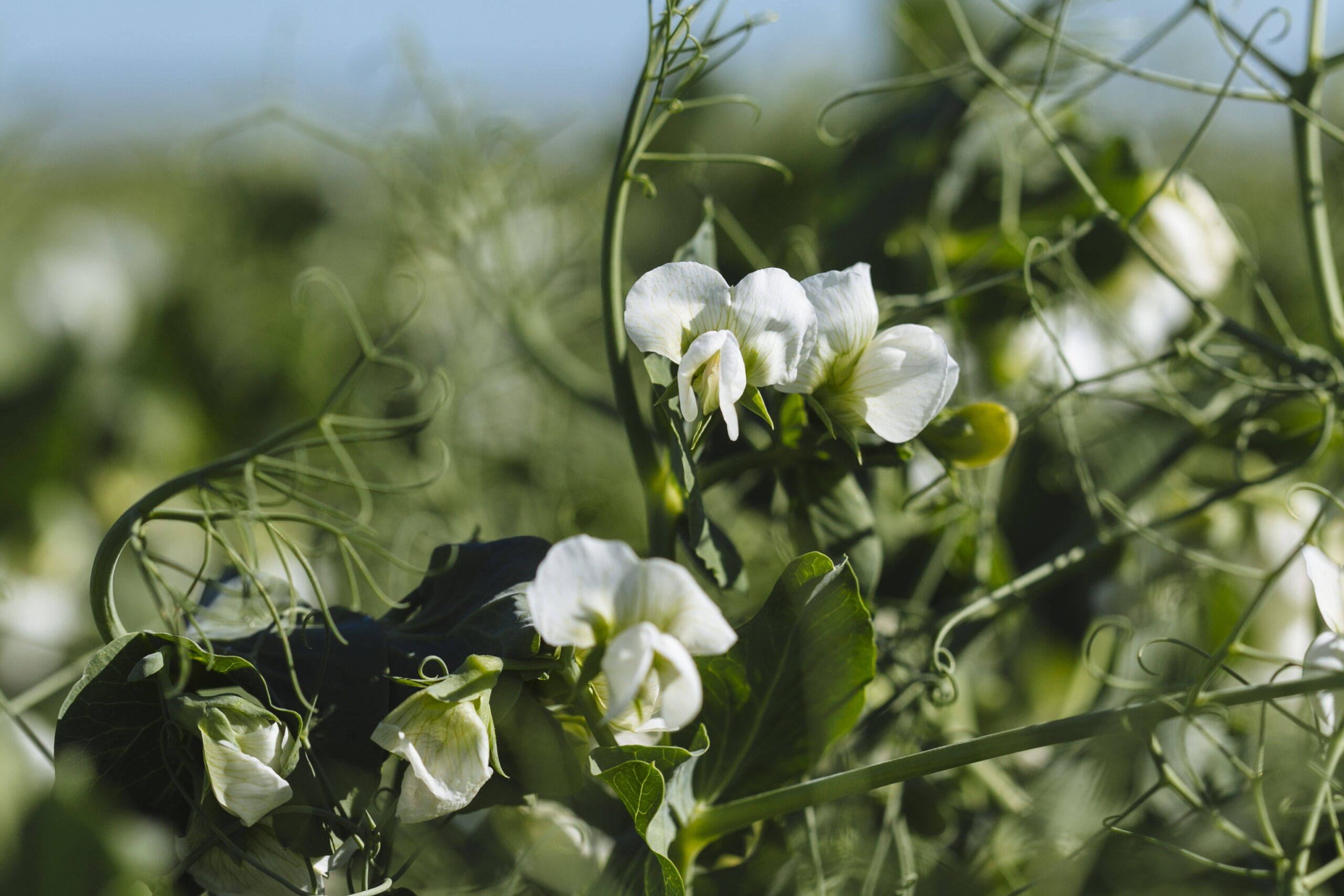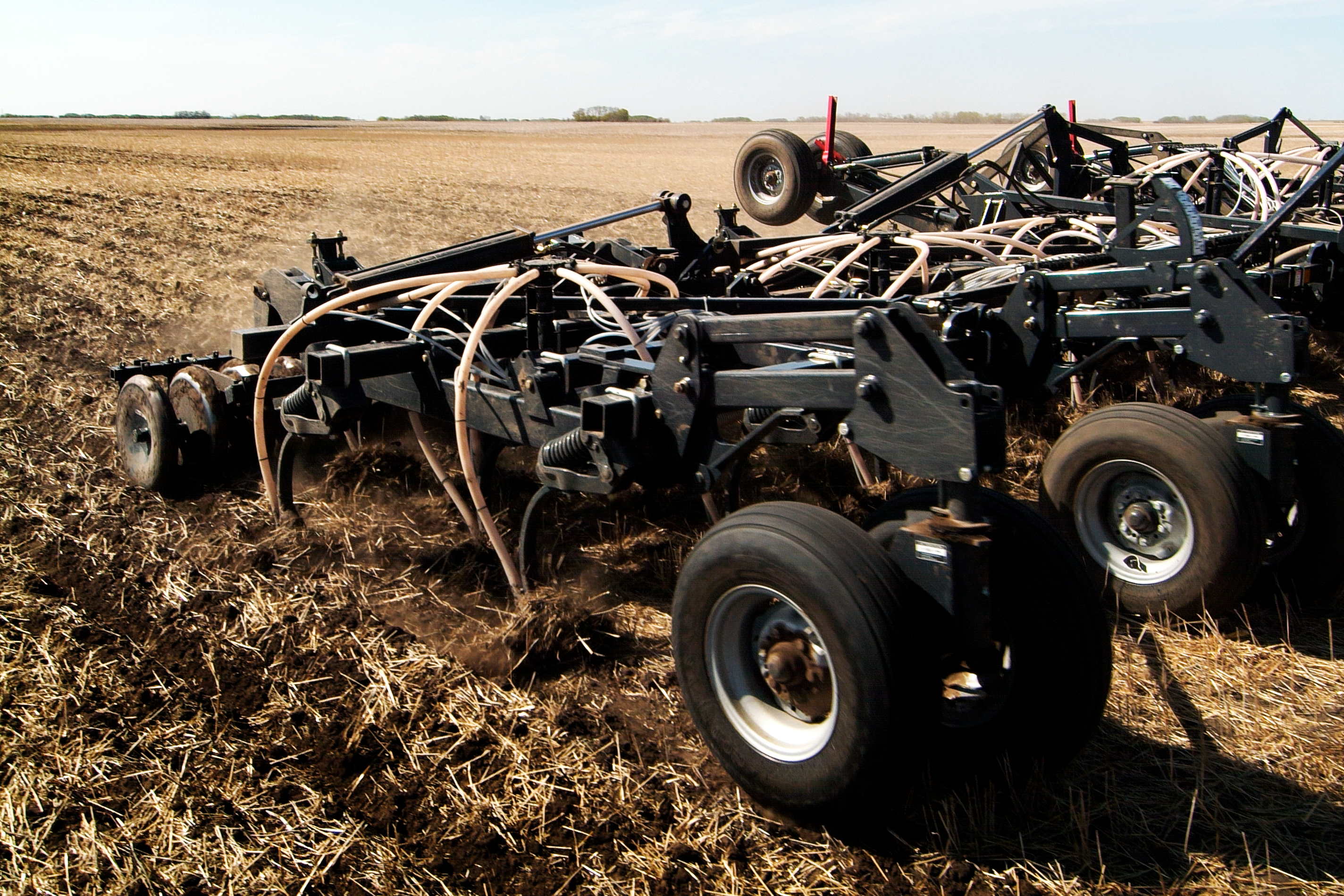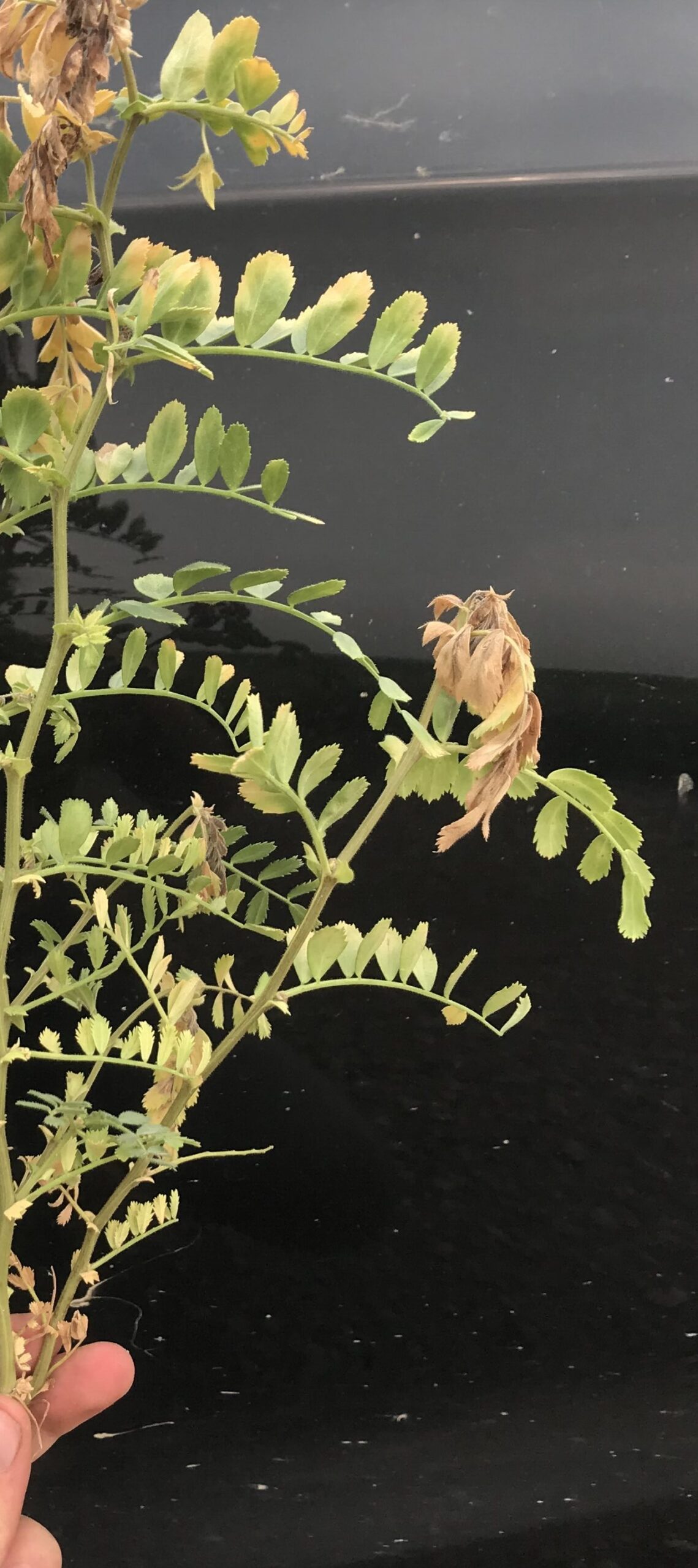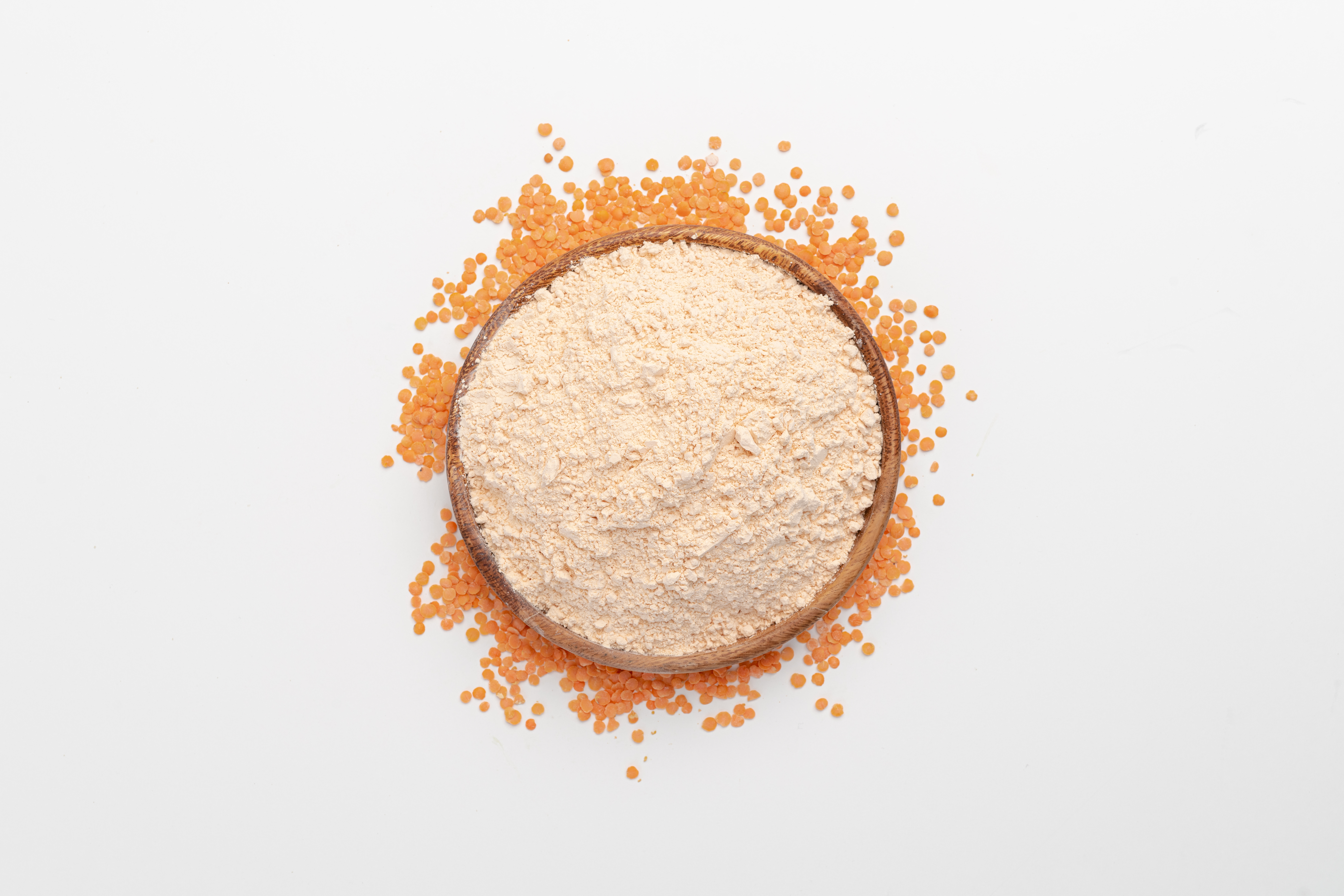

Canada’s pulse industry is viable and sustainable, but ensuring it stays that way requires giving growers access to sophisticated varieties that are adapted to their everchanging local growing conditions.
With the support of Sustainable Canadian Agricultural Partnership (S-CAP) AgriScience Program – Clusters Component, Saskatchewan Pulse Growers (SPG), Alberta Pulse Growers (APG), Manitoba Pulse and Soybean Growers (MPSG), Ontario Bean Growers (OBG), and Pulse Canada, Canadian pulse and soybean growers will have access to new varieties of chickpeas, dry beans, field peas, lentils, and faba beans faster than ever before.
Chickpea
Chickpea is typically a high-value pulse crop, with the potential to provide increased revenue to growers. University of Saskatchewan’s Dr. Bunyamin Tar’an, Professor and Saskatchewan Ministry of Agriculture’s Strategic Research Program (SRP) Chair in Chickpea and Flax Breeding and Genetics, together with his team, are developing new chickpea varieties that will better adapt to climate change, with a shorter growing season, and improved tolerance to disease and heat stress. Using cultivars that are resistant to disease will reduce fungicide applications, reducing production costs and increasing the sustainability of chickpeas in rotations.
“The development and distribution of heat-tolerant chickpea varieties, combined with enhanced weed and disease controls, can significantly improve chickpea resiliency in adverse climate conditions,” says Dr. Tar’an. “For growers, this will not only work to reduce their production costs, but it will also bolster yields.”
Dry Bean
Earlier maturity, higher yield, and improved disease resistance are some of the objectives Dr. Parthiba Balasubramanian is working on developing in new dry bean cultivars at the Agriculture and Agri-Food Canada (AAFC) Research Centre in Lethbridge, Alberta.
White mould disease is a constraint to dry bean production in the Southern Prairies. By choosing dry bean cultivars that are more upright, they will be more physiologically resistant to white mould, not only improving yield and quality but also reducing fossil fuel and fungicide costs.
Using genomic selection and phenomics tools, Valerio Hoyos Villegas, Assistant Professor of Plant Breeding and Genetics at McGill University, is working to make dry bean production more resource-efficient.
Genetics is the study of one gene, but genomics is the study of an organism’s complete set of DNA and the interrelations and influences on each other. His team will use the data derived from genomic selection and phenomics tools for the wider application of genomic technologies in dry bean, enabling breeding programs to access and utilize information and germplasm at an unprecedented rate.
“We are optimistic that we are on the right track for the exploration of novel approaches to disease-free dry bean seed production in Canada,” says Villegas.
Field Pea
For field peas to remain a key component in crop rotations across the Prairies, improvements must be made to the crop’s ability to fix nitrogen through its roots. To do this, Dr. Tom Warkentin, Professor and Pulse Crop Breeder with the Crop Development Centre at the University of Saskatchewan, aims to develop new, high-yielding pea varieties with an improved nitrogen-fixation ability, higher protein, and better heat and drought tolerance. According to Dr. Warkentin, the new varieties will carry one or more of those traits. The new varieties should also have improved protein content, making them better suited for the value-added ingredient market.
“We hope these varieties bring value to growers’ bottom line. By extending crop rotations, they aid in mitigating cereal and oilseed disease problems,” says Dr. Warkentin. “Having strong pulse crop varieties in crop rotations works to improve the outlook of Prairie farms.”
This summer, Dr. Steve Shirtliffe, a Professor in the Department of Plant Science at the University of Saskatchewan, plans to utilize advancements in drone technology to evaulate variety visual characteristics in field plots.
Visually assessing a plant’s important traits (phenotyping) is important to plant breeders. Normally, plant breeders phenotype by walking the plots and taking notes. However, there are limits to how often they can visit the plots and what they can measure by looking at the plants. Dr. Shirtliffe will be phenotyping using images captured by unmanned aerial vehicles (UAVs), commonly known as drones. He will be quantifying traits such as plant vigour and harvest index. He will also be selecting field pea plants with tolerance to Aphanomyces root rot to estimate root biomass and growth rate accurately and non-destructively.
“Using drones will not only allow us to select the best plants early in the breeding cycle, but will also allow us to select varieties that grow quickly in root rot nurseries,” says Dr. Shirtliffe. “This means pulse growers could reap the benefit of their research investment sooner.”
UAV phenotyping is not the only exciting research happening in field peas as part of this research cluster. Dr. Dengjin Bing, research scientist and field pea breeder at AAFC Lacombe Research and Development Centre in Lacombe, Alberta will be using single nucleotide polymorphism (SNP) based markers to identify the locations of genes contributing to traits associated with grain yield, maturity, standability, and seed size.
“This project aims to develop field pea varieties that have a 3% or higher grain yield and higher protein yield than currently available,” says Dr. Bing. “SNP-based markers will allow us to speed up the development of new varieties so that farmers will have access to them sooner.”
Faba Bean
Dr. Nicholas Larkan is a research scientist with AAFC, specializing in pulse crop genomics. He has gathered lines of faba beans from 55 countries and will be assessing the yield, height, seed colour, protein, and disease-resistance traits of each variety in order to identify the genes controlling them. Dr. Larkan hopes this information will empower faba bean breeding programs to develop varieties suitable for a wide range of growing conditions.
“Having a viable pulse option for every acre in Western Canada is key to the long-term sustainable and profitable pulse sector,” says Dr. Larkan. “We hope that faba bean will be another pulse option available to growers to diversify not only their production but also their marketing.”
Sustainability & Resilience
As pulse production has human health, environmental health, animal health, and soil health benefits, the sector is sustainable from both a market and environmental point of view. The cluster’s collaborative research projects in breeding and genetics will not only be using the newest advances in genomics but also in phenomics, allowing farmers to have access to new varieties that can better adapt to changing growing conditions and be more resilient to pests and disease.
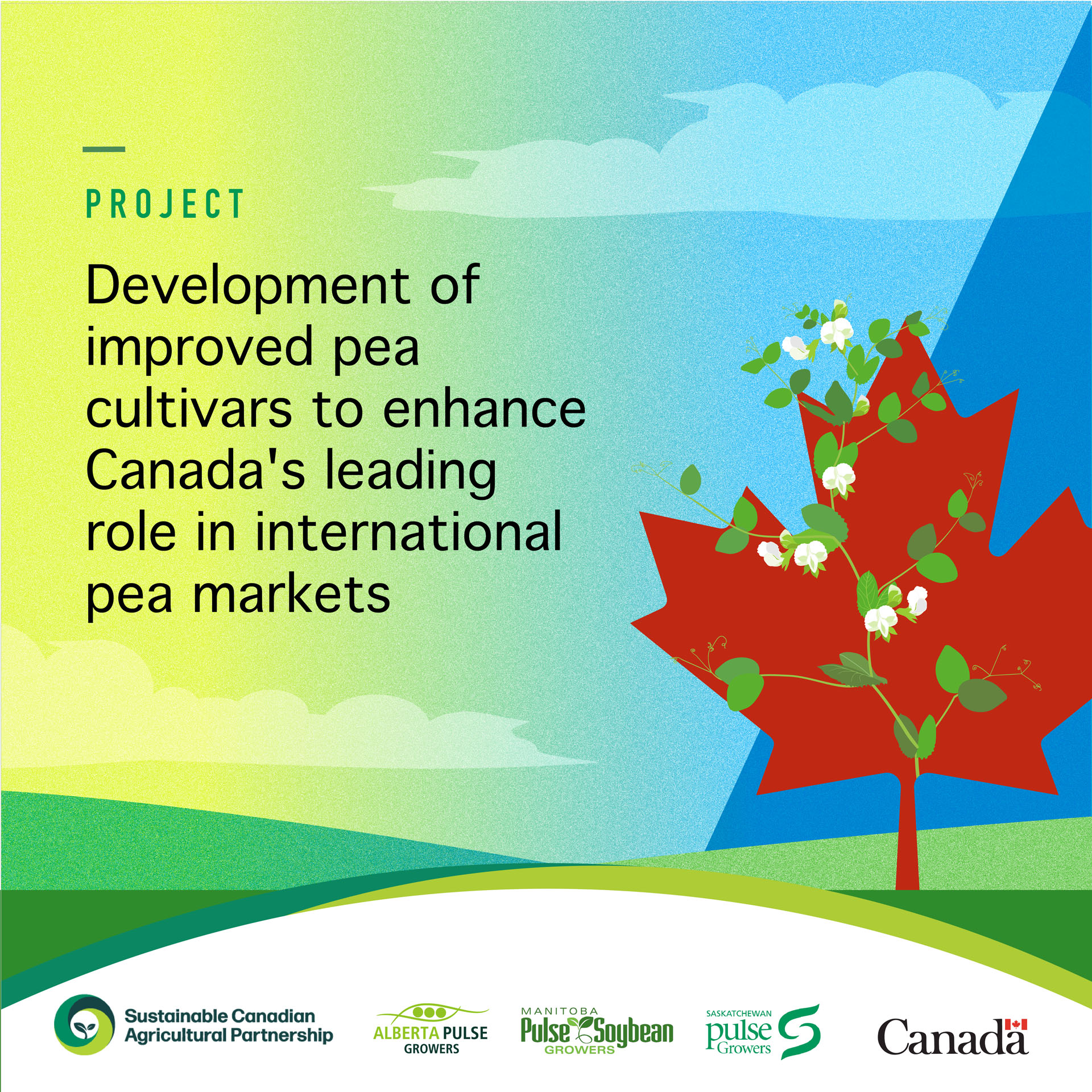
Project: Development of improved pea cultivars to enhance Canada’s leading role in international pea markets
Principal Investigator: Dr. Tom Warkentin, University of Saskatchewan
Industry Funders: APG, SPG, MPSG
Project Cost: $4,239,829
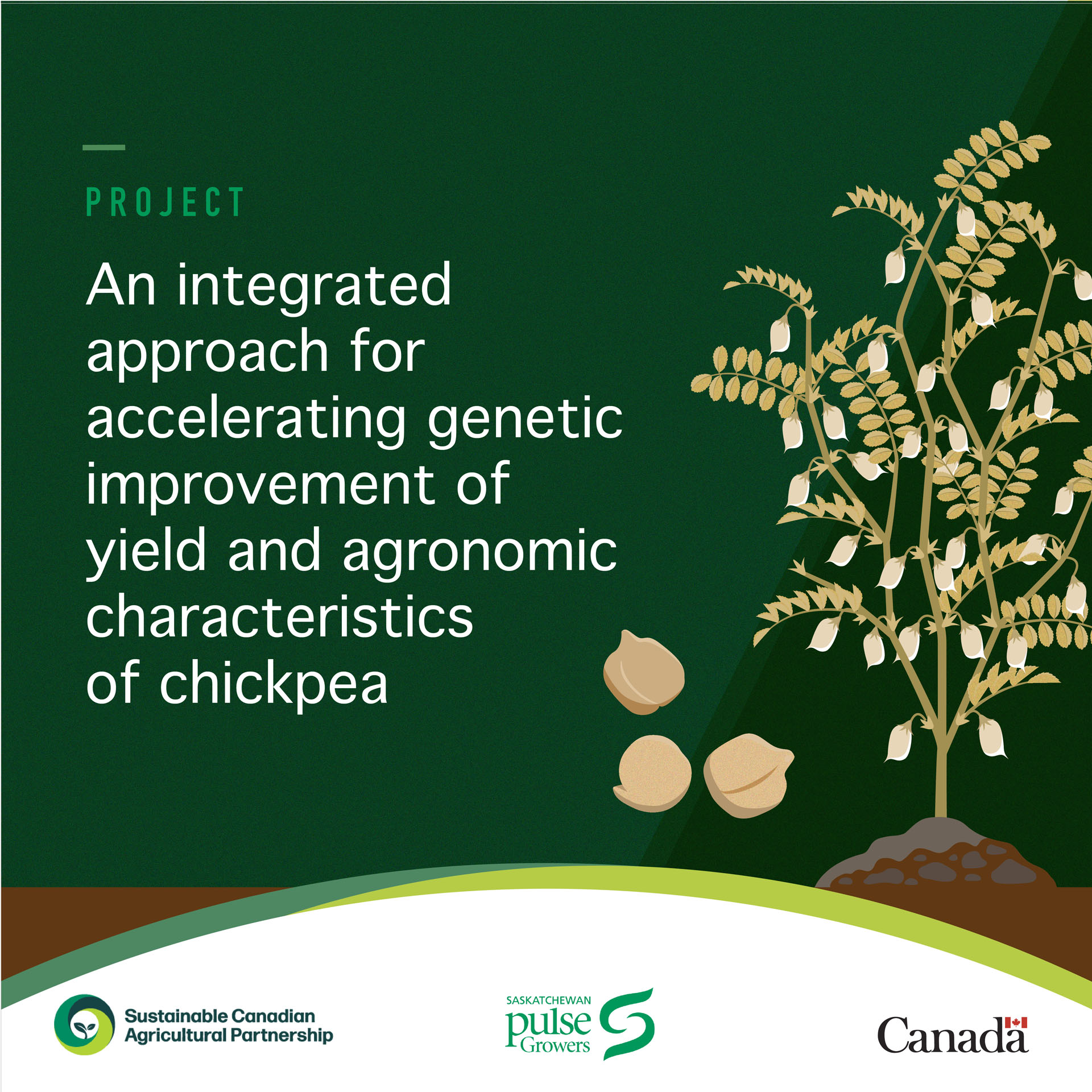
Project: An integrated approach for accelerating genetic improvement of yield and agronomic characteristics of chickpea
Principal Investigator: Dr. Bunyamin Tar’an, University of Saskatchewan
Industry Funder: SPG
Project Cost: $2,743,465
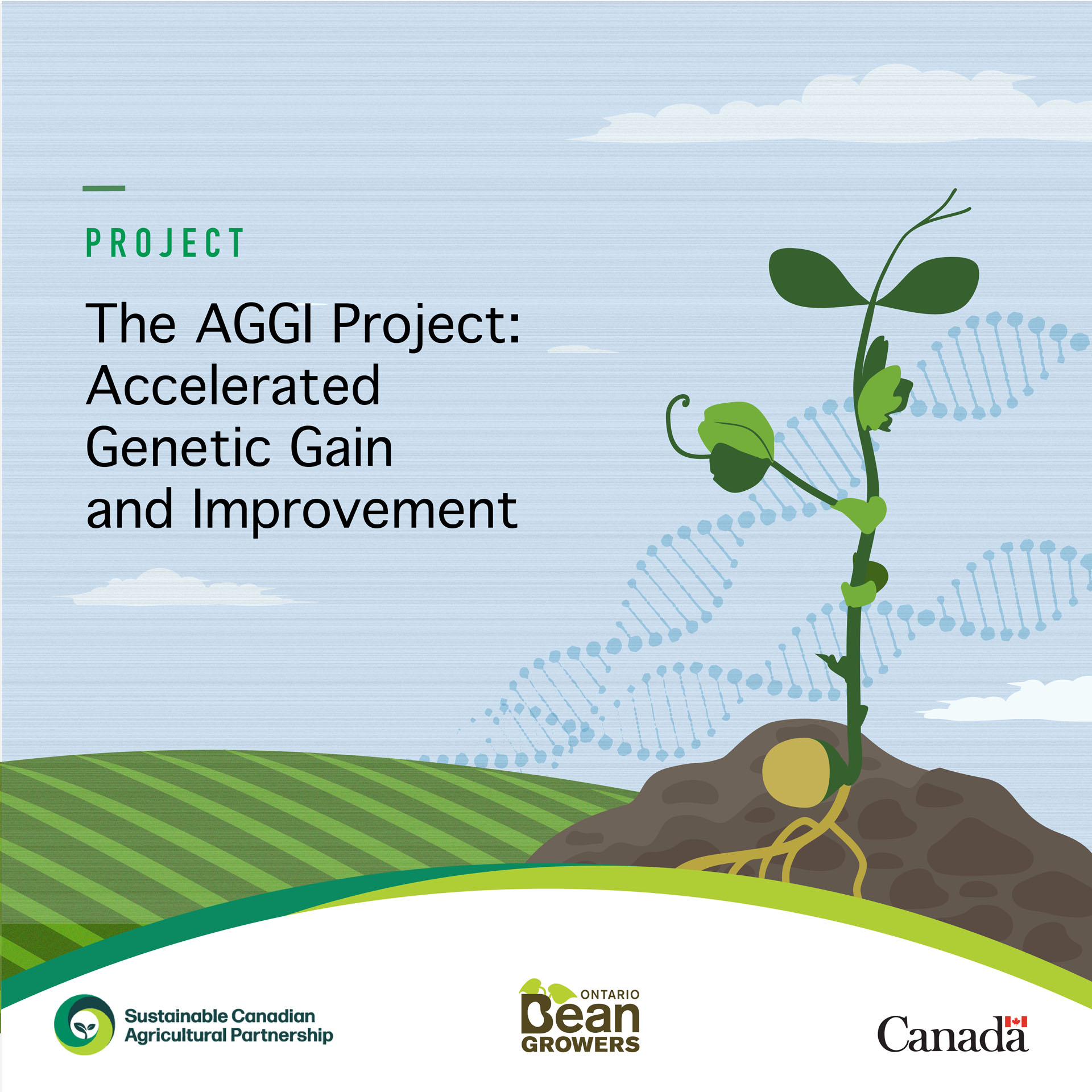
Project: The AGGI project: accelerated genetic gain and improvement
Principal Investigator: Valerio Hoyos-Villegas, McGill University
Industry Funders: OBG, MPSG
Project Cost: $2,211,537

Project: Breed for top-performing field pea varieties and develop SNP-based markers for marker-assisted selection for grain and protein yield, maturity, standability and seed size
Principal Investigator: Dr. Dengjin Bing, AAFC
Industry Funders: APG, SPG, MPSG
Project Cost: $1,283,599
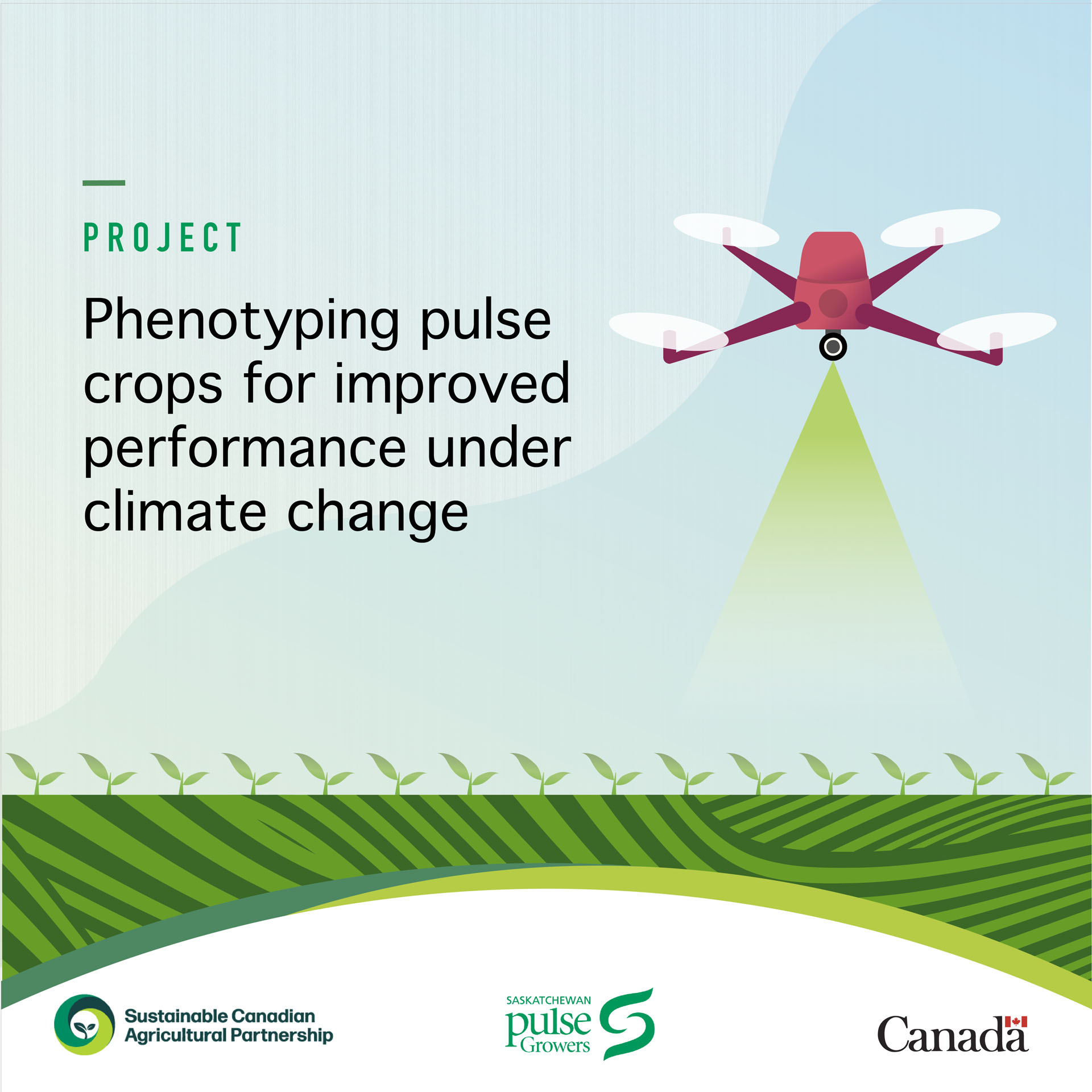
Project: Phenotyping pulse crops for improved performance under climate change
Principal Investigator: Dr. Steve Shirtliffe, University of Saskatchewan
Industry Funder: SPG
Project Cost: $1,226,793
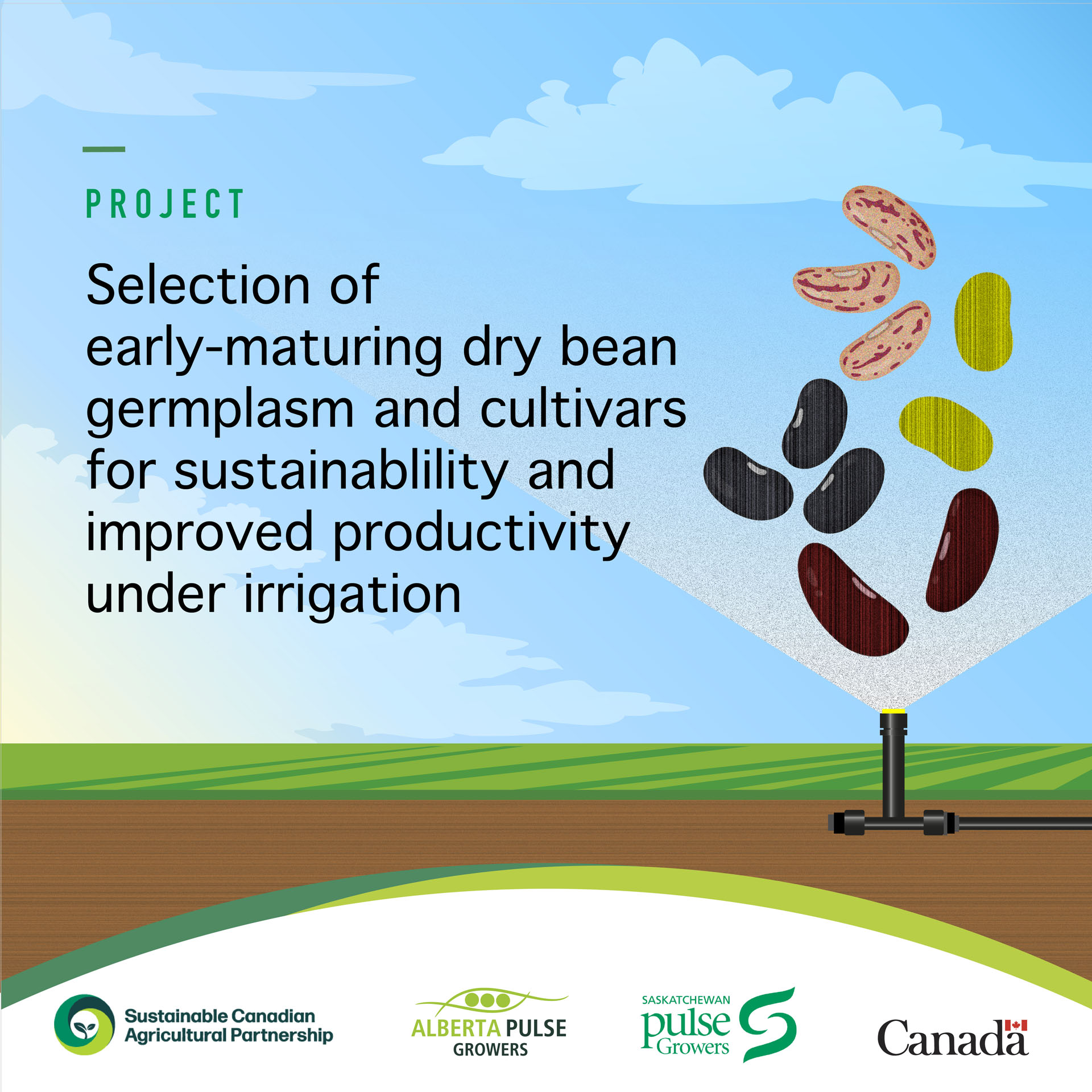
Project: Selection of early-maturing dry bean germplasm and cultivars for sustainability and improved productivity under irrigation
Principal Investigator: Dr. Parthiba Balasubramanian, Agriculture and Agri-Food Canada (AAFC)
Industry Funders: APG, SPG
Project Cost: $1,225,495
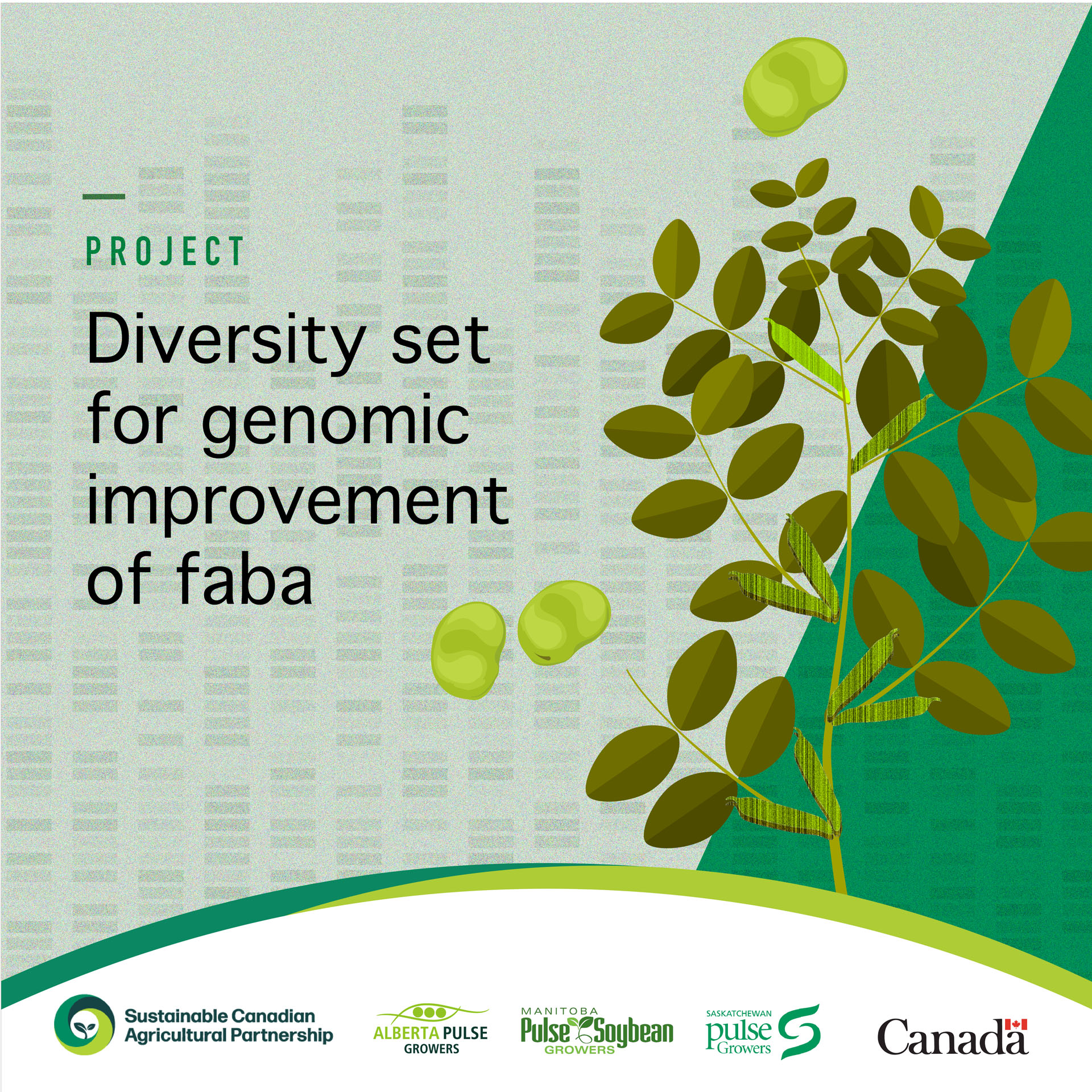
Project: Diversity set for genomic improvement of faba bean
Principal Investigator: Dr. Nicholas Larkan, AAFC
Industry Funders: APG, SPG, MPSG
Project Cost: $636,415




